Crown Victoria Rear Shock Absorber
Replacement Notes
The passenger rear shock absorber on this vehicle was severly worn. The
casing of the shock was covered in oil indicating the seals had failed.
And when the vehicle was driven on the road, the passenger rear side of
the vehicle seemed to oscillate uncontrollably somewhere the natural
frequency of the suspension spring. Replacing the deceased rear shock
absorbers on this vehicle would have numerous safety and handling
benefits. But this was much easier said than done due to corrosion and
limited access to the top nut which retained the shock absorber to the
vehicle's frame.
Note: Most of the images on
this page can be enlarged by clicking the left mouse button on the
appropriate picture in your web browser. If a red X appears instead of
an image, clicking the right mouse button in your web browser will
reveal a menu with the option to "show picture" which will attempt to
reload the selected picture from this server.
First, the vehicle is raised and supported with a pair of jackstands
under the frame and a jack placed under center of the rear axle
assembly.

The top nut was hopelessly seized and wouldn't turn with a wrench.

So a different tool was used
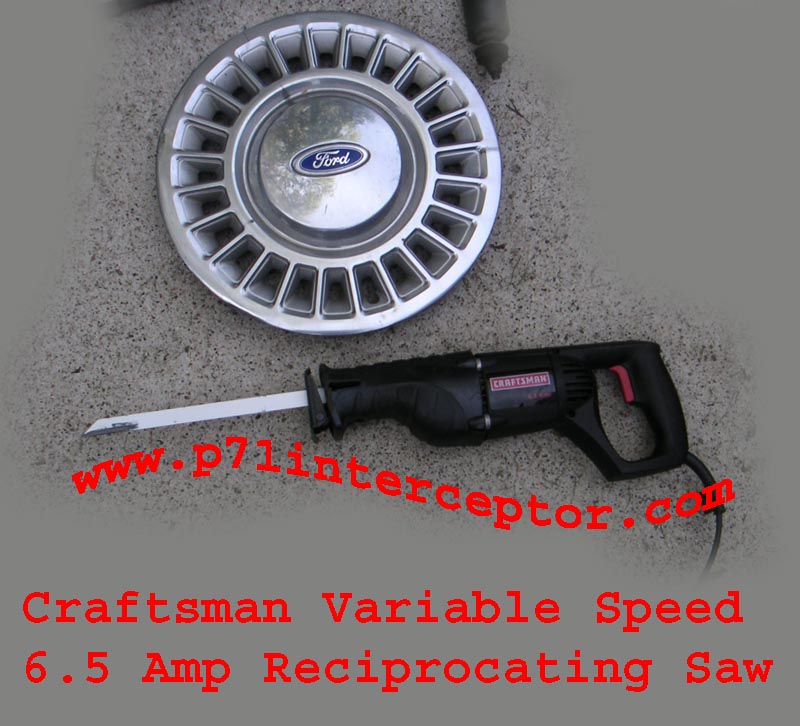
With some really long blades
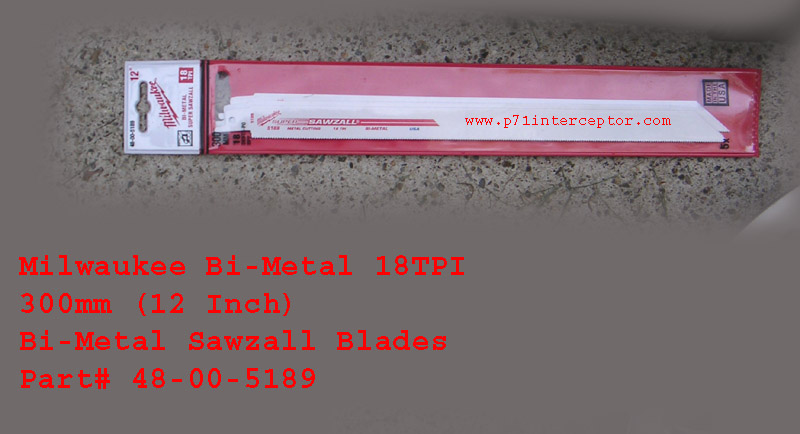
There's was still a little metal left retaining the top nut and washer
to the shock to remove.
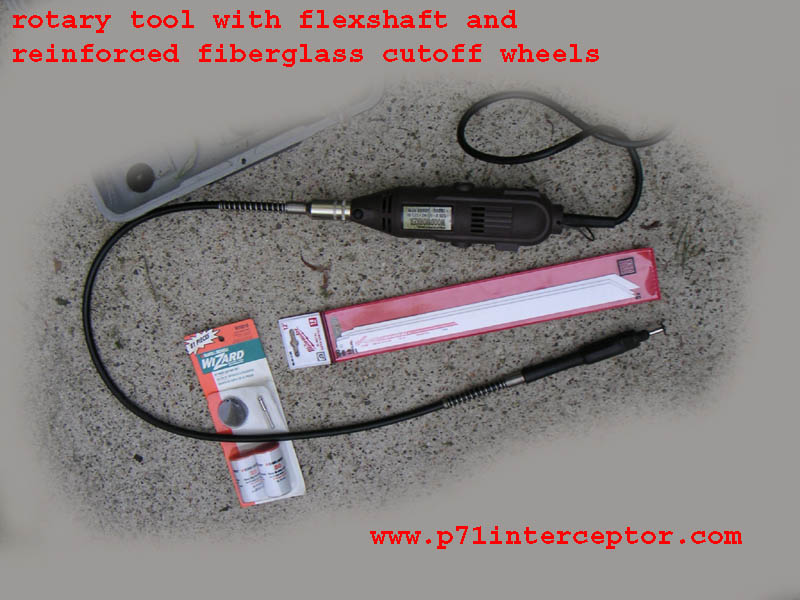
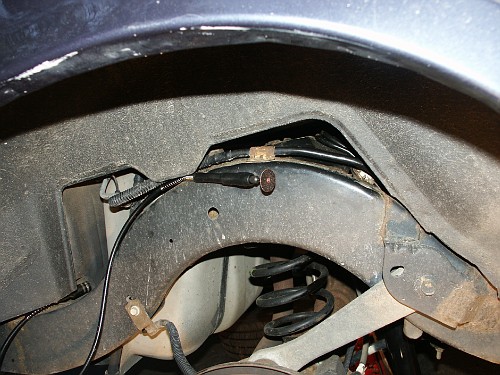
The shock absorber was still being stubborn and wouldn't come out after
most of
the material retaining the shock to the vehicle's frame has been
removed. So the rearend was raised to it's upwards travel limit and
then slammed down on each
side by quickly releasing hydraulic pressure from the jack. The
slide hammer effect of the spring finally
broke the top of the shock free. And the vehicle did not fall off the
jackstands, break the brake hoses, or have the springs fly out in the
process either. Leaving one shock absorber connected between the
rearend assembly and the frame at all times increased the safety of
this procedure to some extent, but there was still a risk of the spring
becoming unseated and causing personal injury or property damage.
The bottom nut of the shock was really easy to remove since personnel
of the local sears service center had just had it off a few days ago.
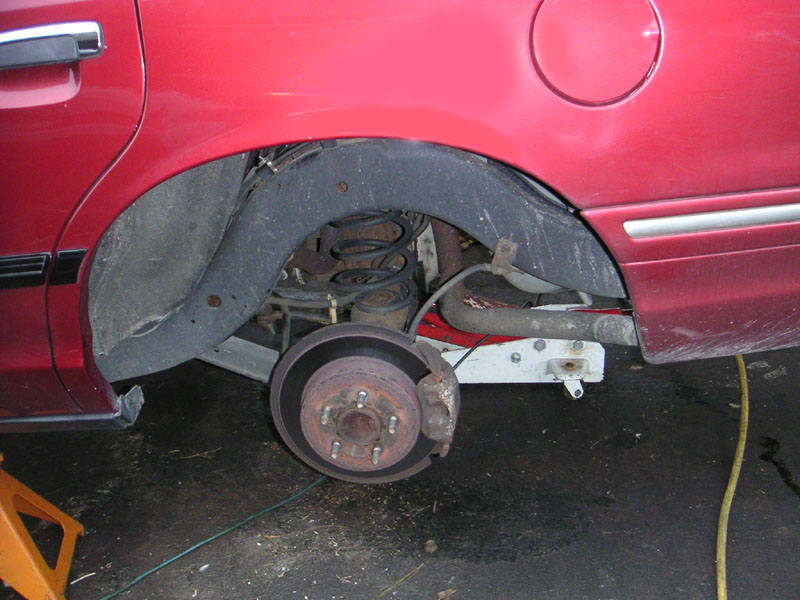
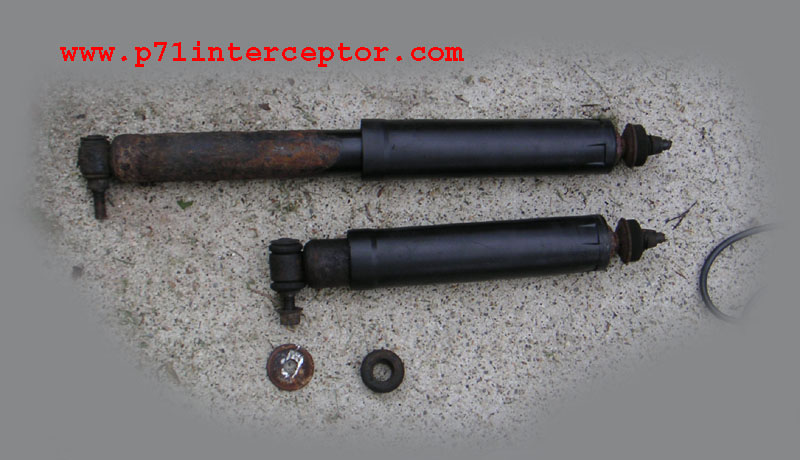

Now that the old shocks were off, it was time to install the new ones.
The gabriel ultras below were sourced from the local autozone for
around fifty dollars a pair. Too bad a few hundred dollars worth of
tools was
required to install them.
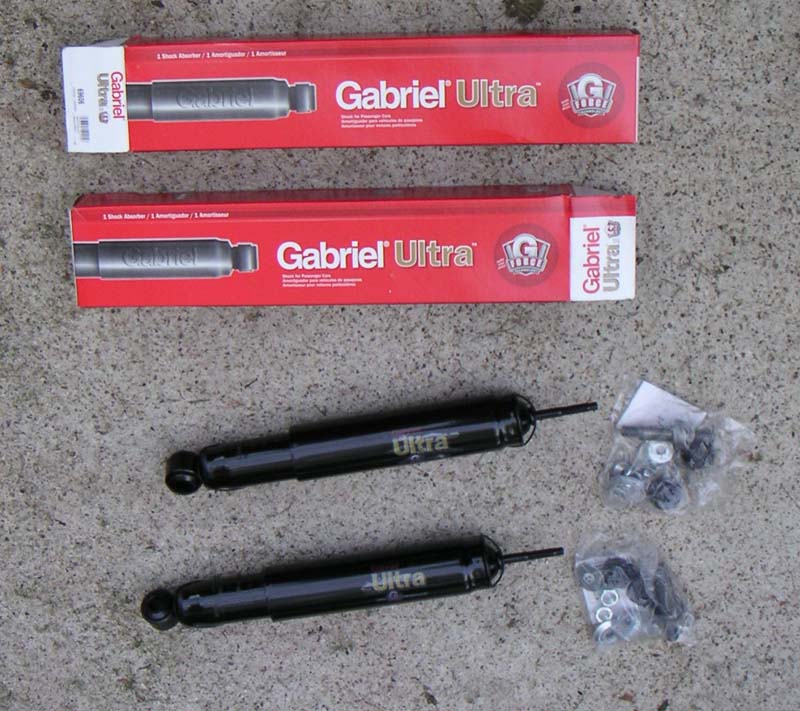
The passenger rear shock was relatively straight forward to install
onto this 1997 crown vic with a set of ratcheting flexhead gear
wrenches. But maneuvering the gear wrench
around the shock absorber stud on the drivers side which was located
only a fraction of any
inch from the fuel lines was difficult. Fortunetly,
the 1998-2002 crown vics are easier to install the drivers shock
on due to the fuel lines being relocated to the passenger side and
taking a different route near the shock stud.

The drivers rear shock absorber required inserting the rubber insulator
with a pair of needle nose pliers. Really long needle nose pliers
likely would have more practical than the locking ones pictured.
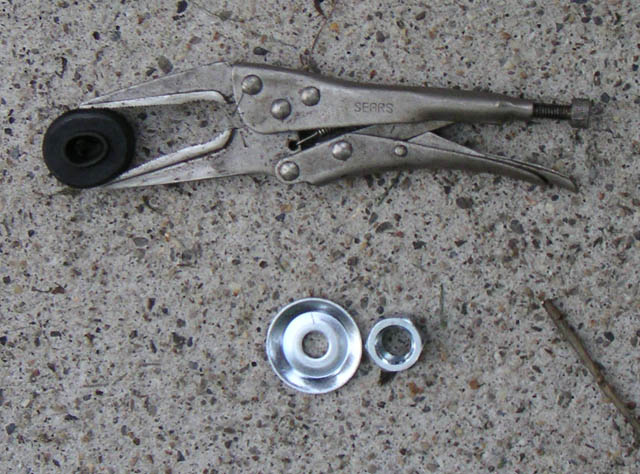
That shinny new black tube is the shock absorber.
The yellowish glow on the rear brake rotor is from a 500 watt halogen
work light. Even if you are working outside in bright sunlight during
the daylight hours, it will still likely be useful to have an assistant
illuminate the area in between the frame and body with such a light. It
is really dark in there and accidentally cutting the fuel or brake
lines will greatly complicate replacing the rear shocks.
Raising the rearend a little will preload the rubber bushing and hold
the shock absorber center stud stationary so that the nut can be
installed onto it.
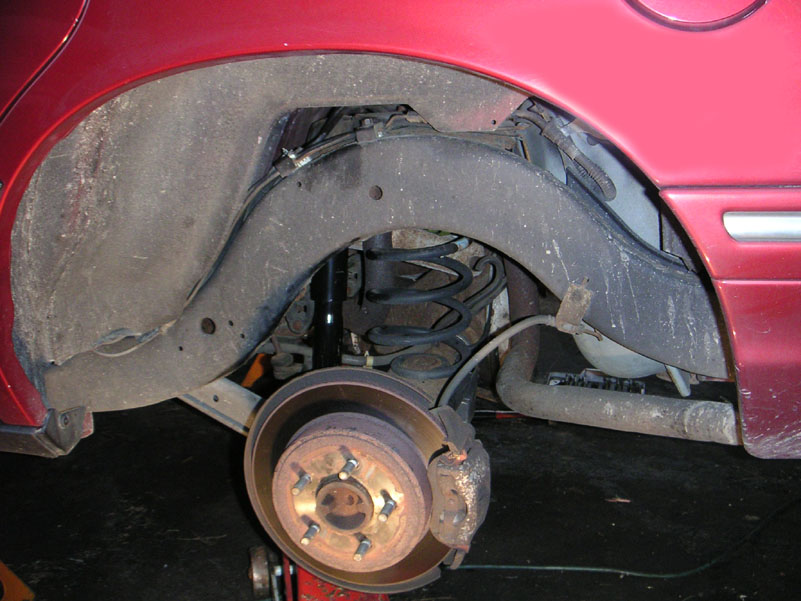
Here is how the shock absorbers connect to the rear axle
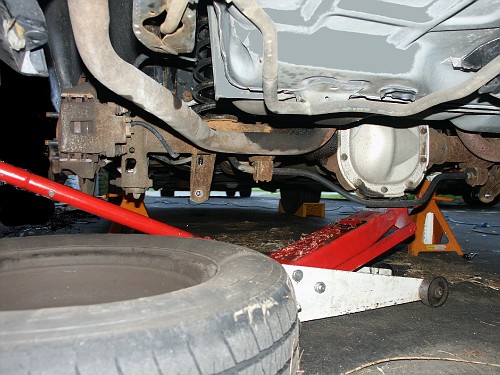
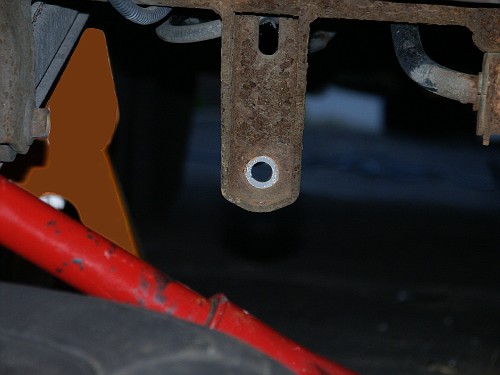
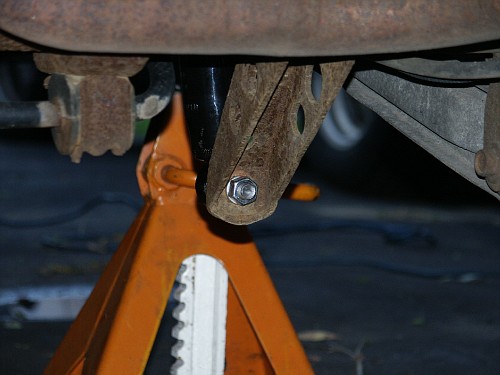
The lower nuts on the shock absorbers often spin off with a pneumatic
air impact wrench.
But if things are really stubborn, an electric angle grinder can be
used. Make sure you don't cut into the shock mount area of the axle
housing and that you don't smell any flamable hydrocarbon gases in the
air before starting though.
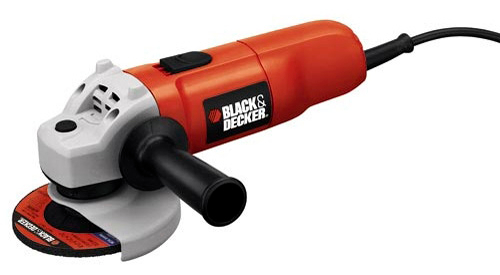
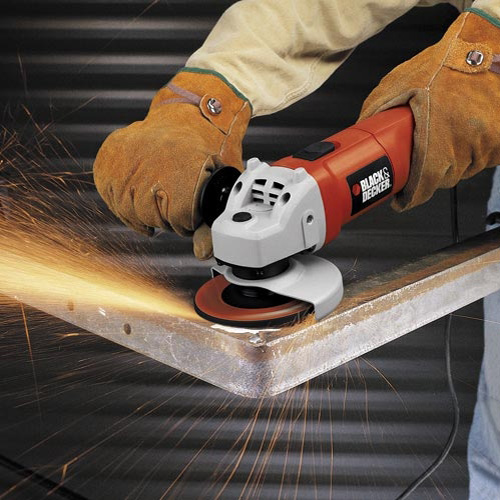
And here are a couple pictures of the rear shock absorbers
that you will encounter on 1998-2002 crownvics.
The passenger's side. Be careful not to cut into the fuel lines.
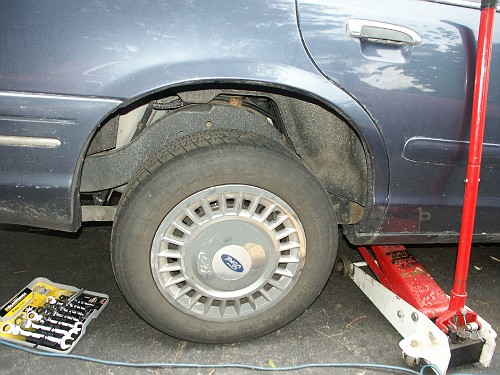
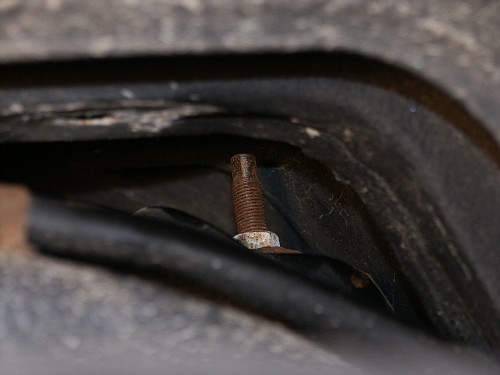
note: fuel tank and exhaust system
removed from vehicle
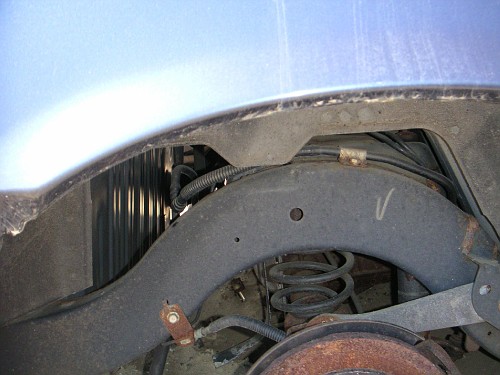
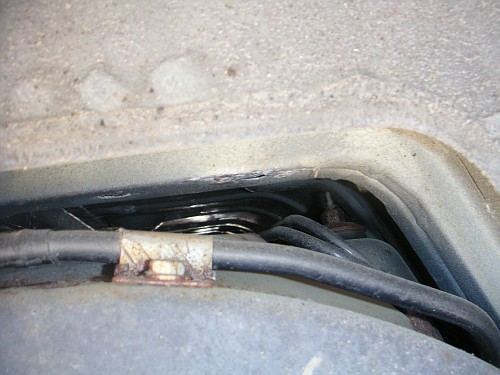
The drivers side of a 1998 crown victoria.
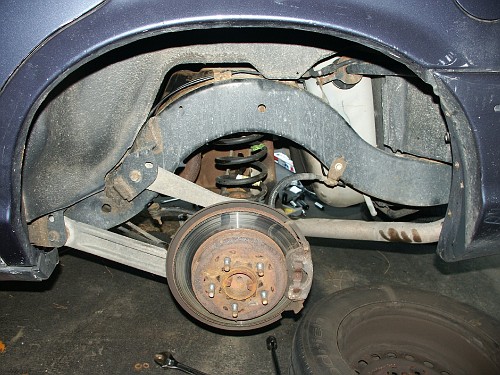
Here are a couple pictures of a 2003 mercury marauder with the rear
clip removed from the frame.
The yellow arrows point to the locations in the rear crossmember where
the top stud of the shock absorbers would pass through in the pre-2003
vehicles.
The red arrows point to the locations where the rear sway bar end links
mount in the 1992+ crownvics.
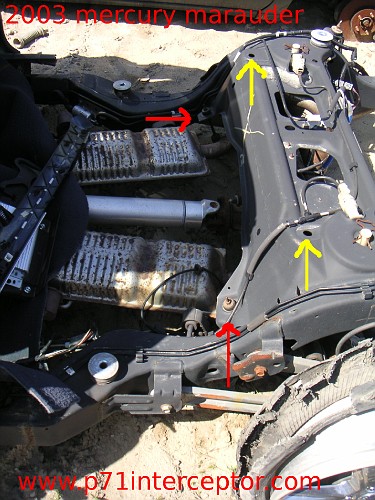
If you own a civilian crown victoria with rear air suspension, be
careful that you do not inadvertently damage the air suspension
components when removing the shock absorbers. The air suspension line
on the driver's side of the car is located very close to where the
shock absorber passes through the vehicle's frame.
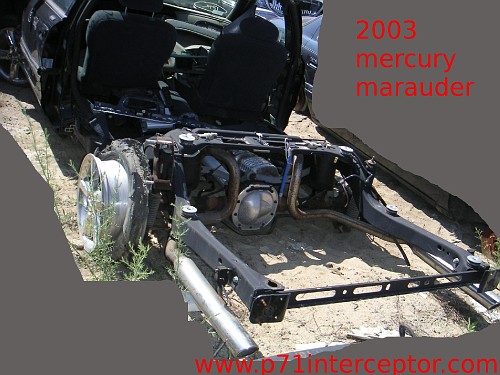
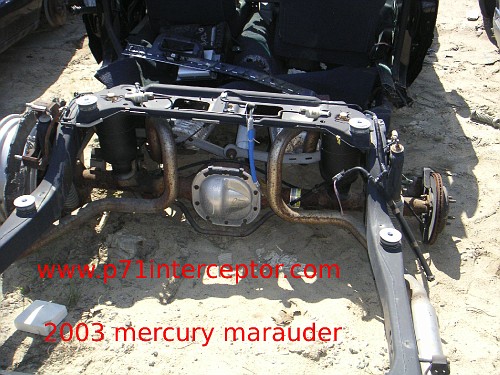
Note the air spring retaining clip and also the vent solenoid. Police
interceptors use conventional coil springs in the rear, and will not
have these components.
However, in some 2005+ police cruisers there will be fire suppression
components mounted in this area.
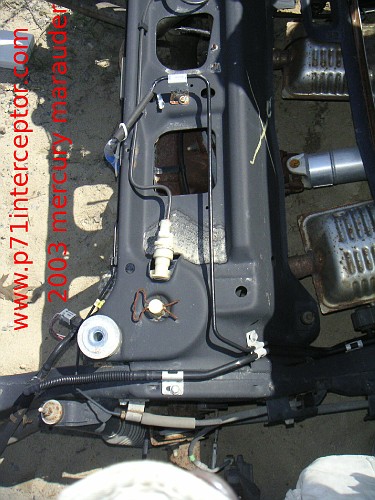
Here are a few pictures of an early 1990's towncar with the floorpan
sheetmetal cut away above the top shock absorber fasteners.
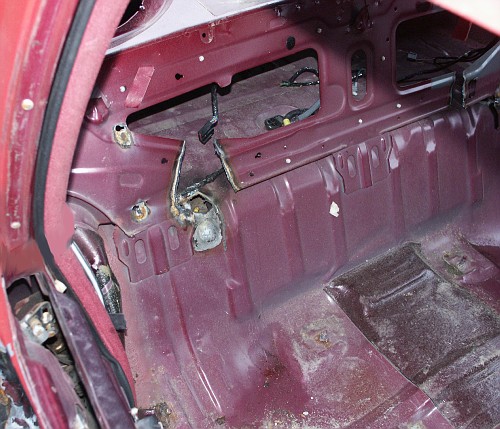
Cutting away the rear seat support with a torch was convient and saved
a little time, but it's recommended to leave the rear seat support
intact if you ever intend to carry back seat passenger's in your car
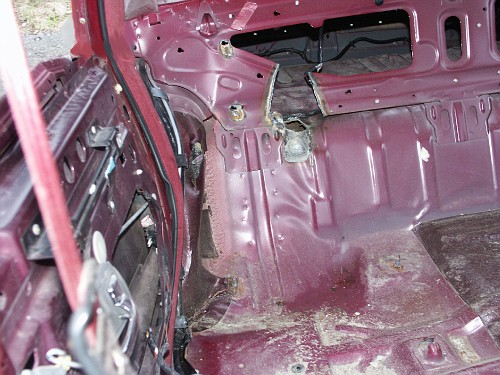
Using an acetylene cutting torch this close to the fuel tank is not
recommended. But if you elect to access the top shock absorber mount
using this method, you should make sure that your life insurance is
paid up and that your last will/testament is stored in a safe place.
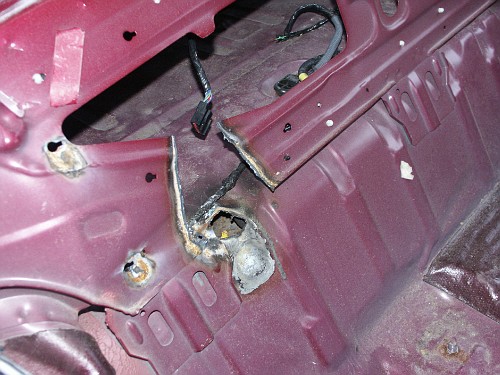

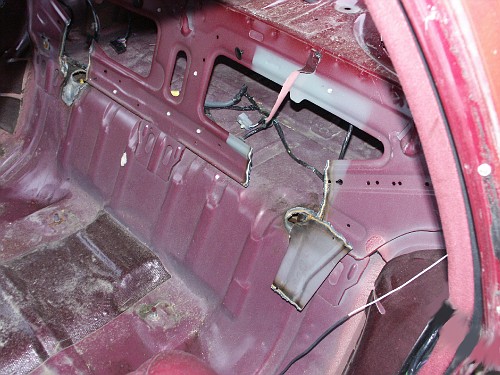

Here are a couple pictures of the rear suspension setup on a 1998 crown
victoria police interceptor
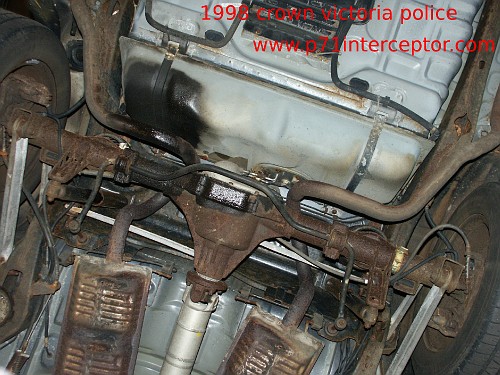
The black grease covering the axle tube and part of the fuel tank is
from the differential vent tube. And yes, this vehicle
definetly needs
new rubber muffler hangers installed.
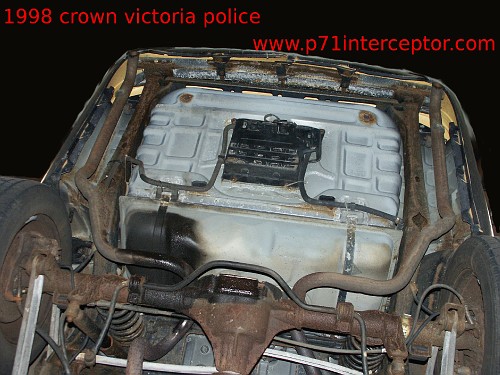
Some points to consider here:
- The upper nut that retained the shock absorber to the vehicles
frame
was severly corroded, and would not turn. This was due in a large part
to the
fact that the vehicle had been driven through multiple "new england"
winters. And
many of the miles were "highway" in which the entire underside of the
car was in
contact with an aerosol mist of chloride salts used to clear the roads
of snow and ice.
- Besides the top nut being corroded, the bottom casting of the
shock absorber also exhibited deep pitting which indicated that it had
been installed for a few years. The top dust tube was not corroded
because it is constructed of plastic.
- The top studs and nuts on the rear shocks were less corroded than
the front shocks likely due to them being in more protected enviroment
and subject to less road splash than the front shocks. But access to
the area where the studs and nuts for the rear shocks pass through the
frame is very limited.
- At the factory, the rear shock absorbers on 1979-2002 crown vics
are installed prior to placing the body on the frame.
- Some people have reported success jacking the vehicle's body off
the frame in the rear a couple inches for shock absorber replacement.
This solution may create other problems such as broken body mount
bolts, broken body mount brackets, bent body panels and damaged wiring
harnesses though.
- Some have also reported success cutting holes in the sheetmetal
of their trunk floor. But locating where to cut the holes can be
difficult. And one will also have to patch the holes after they are
cut. There is also a possibility of damaging the fuel tank and other
underchassis components.
- Instead of cutting the shock absorber nut off from in between the
frame and the body, it is also possible to access the shock absorber
stud from underneath the frame if the suspension spring is first
removed. This method of removal is not covered here though.
- The top stud and nut of the shock is located only inches from the
fuel
tank. Use of an acetylene cutting torch near the fuel tank is extremely
dangerous and is likely to result in severe personal injury or death.
- Use of an acetylene torch to cut the shock stud from underneath
the frame is also very dangerous. Significant amounts of heat will be
transfered to the area in between the frame and body of the car in the
cutting process. And the rubber frame insulators may also catch fire.
- Many of automotive service centers in this area are already wise
to the
difficulty of removing the crown vic rear shocks and will have dozens
of different bogus excuses to keep your car out of their shop.
- Many of the shops in this area that haven't dealt with these
vehicles
previously seem likely to get the car "up on the lift" and then not be
able to get the top nut off the shock.
- It should be noted here that sometimes the top nut comes off by
turning the dust tube and holding the top nut with a wrench, but
sometimes it's hopelessly seized in place.
- A sawzall with a long 12" bimetal blade will cut through the stud
and release the shock from the frame with some persistence. On the
pre-1998 crown vics, the
fuel lines are located on the drivers
side of the vehicle and run extremely close to the top shock absorber
nut.
Be very careful not to damage them. On the 1998-2002 crown vics, the
fuel
lines are located on the
passenger side.
- If the shock absorber is corroded, then the rest of the vehicle
likely has some corrosion present too. The fuel lines on 95+ crown vics
are constructed of high grade stainless steel that will not corrode
like the steel ones used on 1994 and eariler vehicles. But fuel tank
and other fuel system components are constructed of sheetmetal and will
corrode rapidly if their protective coating has been damaged. There are
also plastic and rubber seals in the fuel system that will fail with
old age.
- An air chisel does not appear to be effective at cutting off the
nut on the top of the frame. Nor does there appear to be sufficent
space to fit a "nut cracker" in there.
- The rear end on the pre-1998 crown vics will drop really low
after the shock absorbers are removed with the limiting factors being
mainly the rear sway bar and the twisting action of the rubber bushings
in the control arms. On the 1998 and later crown vics, the watts
rear linkage appears to limit downwards travel to some extent. But one
should always place a wide high capacity floor jack under the rear as a
safety precaution.
- The stud and nuts which retain the shock absorber to the rear
axle can also be stubborn, but impact tools will likely get these free.
If they are really corroded, they may have to be "cut off" though.
- The small rotary tool pictured above is intended for light hobby
use and appears to have been been irrepairably damaged by grinding off
shock absorber studs. It's motor refused to spin shortly after this
project was completed.
- Additionally, keep in mind that the high speed rotary tool will
generate
sparks which could ignite gasoline fumes. The risk with this tool is
much lower than
with an acetylene torch, but is still present. A high speed fan or
outside wind will increase air circulation and decrease the risk of
this complication.
- Metric flexhead gear wrenches were invaluable for this
project due to the limited range of motion when tightening the top nut.
- 2003 and later crown vics have a slightly redesigned rear
suspension with the shock absorbers located outside the frame rails.
This makes rear shock replacement considerably easier on these vehicles.
Return to Main Page


































